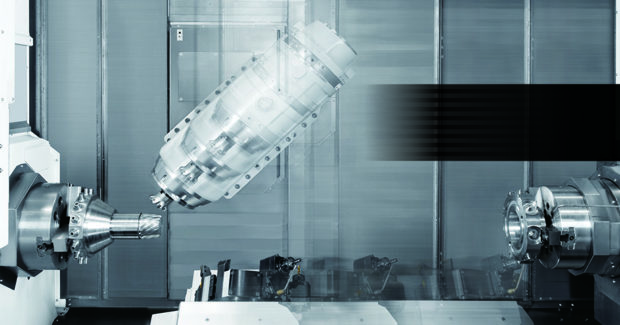Artificial Intelligence Powers Spindle Health Monitoring
Predictive analytics diagnose pre-failure conditions before downtime occurs. Mazak’s Spindle Health Monitoring System uses edge computing and algorithms to model a spindle’s baseline signature against which anomalies that indicate developing alignment or balance issues are readily identifiable.
Posted: April 6, 2020
The continuous high-speed process of transferring torque and power to cutting tools eventually takes its toll on machining center shafts and bearings. Spindles drift out of alignment and balance over time. They can suffer damage from crashes that bend their shafts, along with increased heat from worn and roughened bearing races.
Without the ability to predict approaching failures, your shop could find itself in the midst of a deadline-sensitive job with out-of-commission equipment and without replacement parts that could take weeks to get. Fortunately, artificial intelligence (AI) can help uncover avoidable problems, making formerly hidden damage easy to spot and enabling technicians to plan proactive maintenance around peak production periods.
Third-party monitoring systems include sensors that attach to specific positions on the spindle and wire up to collection systems that store data in the shop or report it to a remote monitoring site through an internet connection. Unless these sensors, the software that accesses them, and the collection system integrate seamlessly with the machining center, however, the system may not be able to detect a useful range of potential problems.
Ideally, the machine tool OEM would develop and install a system complete with integrated sensors and a user interface that displays on the machine CNC, with remote monitoring options via wireless access.
Developed in conjunction with the Industrial AI (IAI) Center at the University of Cincinnati, the Mazak Corp. (Florence, KY) Spindle Health Monitoring System uses edge computing and data analytics algorithms to model each machine’s spindle signature during a 60-second fixed-cycle test run, establishing a baseline value for comparison in subsequent tests. Operators can conduct tests at any time and view spindle health on Health Assessment and Fault Diagnosis screens displayed on the machine’s Smooth CNC control.
Two sensors feed high-definition data to an acquisition unit connected to an industrial computer for processing. A neural network self-organizing map (SOM), also known as AI, compiles a growing profile of each machine, learning to assess its health through features extracted from a growing data set.
As technology continues to revolutionize machining, predictive analytics gives shops advance warning of conditions that can derail their productivity and profitability. Mazak’s system represents ongoing development in OEM integration of smart features into high-tech machines. As its capabilities continue to develop toward a production-ready option, it shows that spindle-health guesswork has become a thing of the past.















